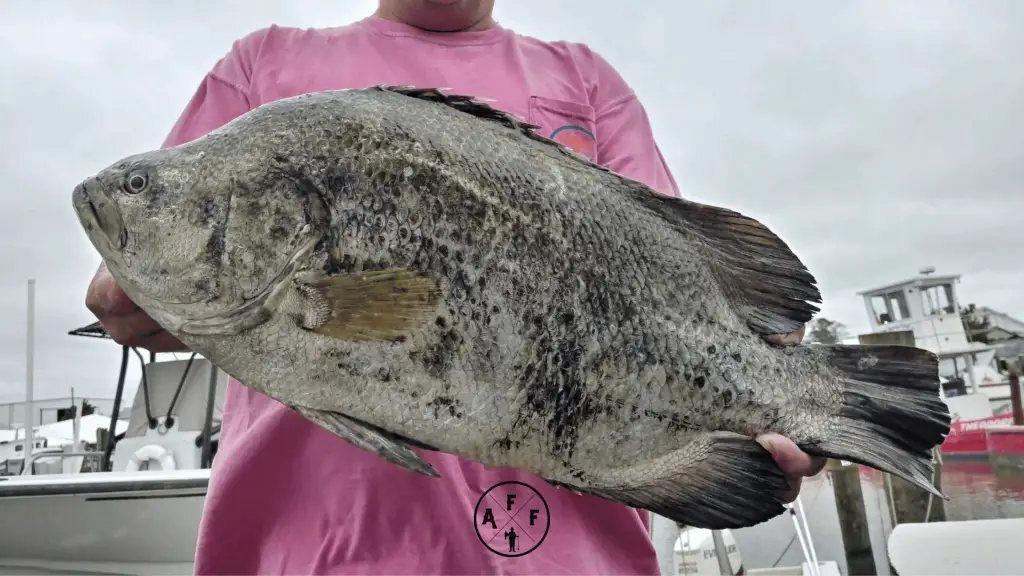
As a food enthusiast, I’ve always been curious about trying new types of fish, and recently, I came across tripletail fish. This type of fish has been gaining popularity in culinary circles, which led me to investigate “are tripletail fish good to eat.” In this article, I will share my findings and discuss the taste and nutritional benefits of tripletail fish.
First of all, I found out that tripletail fish are not only safe to eat, but they also have mercury levels below the recommended acceptable level of 0.5 ppm. However, it’s essential to be mindful of how often you consume larger oceanic fish to avoid a build-up of mercury in your body. This is especially true for pregnant people, breastfeeding individuals, or those with a sensitivity to mercury.
Moving onto the taste, many people describe the flavor of tripletail fish as mild and slightly sweet. Their firm flesh makes them ideal for versatile cooking methods, such as grilling, baking, sautéing, or poaching. I also discovered that they are a good source of Omega-3 fatty acids, adding nutritional benefits to their delicious taste.
Are Tripletail Fish Good to Eat?
In my experience, tripletail fish is a delicious and versatile option for seafood lovers. With its mild, sweet flavor and slightly firm texture, I find it similar to flounder or sole. Because of its versatility, I can cook tripletail fish in various ways, such as baking, broiling, grilling, and sautéing. I’ve also found it to be a great choice for fish tacos or sandwiches.
One of my favorite recipes involves wrapping the fish in parchment paper, along with herbs, fruits, spices, butter, and wine, then placing it in the oven. This method yields an incredibly aromatic and flavorful dish, impressing both my family and guests.
Besides its taste, I appreciate the nutritional benefits of tripletail fish. As a good source of Omega-3 fatty acids, it contributes to a healthy diet. It’s essential for me to mention that most tripletail fish have mercury levels below the recommended acceptable level of 0.5 ppm. Nevertheless, I’m cautious about how often I consume larger oceanic fish to avoid a buildup of mercury in my body. For those who are pregnant, breastfeeding, or have a sensitivity to mercury, it’s crucial to limit consumption.
In summary, tripletail fish is both tasty and nutritious, making it an attractive option for seafood enthusiasts. With its versatility in cooking methods and mild flavor, I can create various delicious dishes. However, I make sure to keep an eye on the frequency of my consumption to maintain a balanced diet and avoid excessive mercury intake.
Nutritional Benefits
Tripletail fish is not only a delicious seafood option, but it also boasts an impressive nutritional profile. In this section, I’ll discuss the protein content, omega-3 fatty acids, vitamins, and minerals found in tripletail fish.
Protein Content
As with most types of fish, tripletail is an excellent source of protein. In each serving, you can expect to find around 16-20 grams of protein, depending on the size of the fish (3 oz serving). Protein is essential for building and repairing muscles, as well as supporting various bodily functions such as the immune system.
Some of the protein benefits in tripletail fish include:
- High-quality, complete protein source
- Aids in muscle building and repair
- Supports a healthy immune system
Omega-3 Fatty Acids
Another significant nutritional benefit of eating tripletail fish is its omega-3 fatty acid content. These essential fatty acids have been shown to support heart health, brain function, and reduce inflammation within the body.
Tripletail fish contains approximately 1,140 milligrams of omega-3s per 3 oz serving. Omega-3s found in tripletail include:
- EPA (eicosapentaenoic acid)
- DHA (docosahexaenoic acid)
Both of these omega-3 fatty acids have numerous health benefits, such as:
- Supporting heart health
- Improving brain function
- Reducing inflammation
Vitamins and Minerals
Tripletail fish is also rich in essential vitamins and minerals, making it a well-rounded and nutritious addition to your diet. Some of the key vitamins and minerals found in tripletail fish include:
- Vitamin D
- Vitamin B12
- Vitamin A
- Iron
- Selenium
- Phosphorus
By incorporating tripletail fish into your meals, you’ll be providing your body with essential nutrients that support overall health and well-being.
Taste and Texture
In my experience with tripletail fish, I’ve found it to have a mild, sweet flavor with a slightly firm texture. When comparing it to other light-flavored fish, it’s similar to flounder or sole. Some may also find the taste comparable to grouper or red snapper, but with a denser profile. The meat is firm and flaky, which makes it a great addition to various dishes.
Due to the versatile nature of the tripletail fish, I’ve had success cooking it in numerous ways. Baking, broiling, grilling, and sautéing are all suitable methods and yield delicious results. Personally, one of my favorite ways to prepare tripletail is searing it in a pan with some olive oil and finishing it off in the oven. This allows for a nice crust on the fish while maintaining its moist texture.
When it comes to seasoning the tripletail, I usually opt for simple flavors like salt, pepper, garlic, and onion. These ingredients help enhance the natural taste of the fish without overpowering it. However, depending on personal preferences, one can experiment with different herbs, spices, or even marinating the tripletail to elevate its taste further.
Some of the dishes I’ve made with tripletail fish include:
- Fish tacos: The firm, flaky texture of tripletail makes it perfect for fish tacos. I’ve enjoyed topping them with a fresh, tangy slaw and a squeeze of lime juice.
- Poached fish: Poaching the tripletail in a flavorful broth allows the fish to maintain its tenderness while absorbing the flavors from the liquid.
- Fish sandwiches: Like fish tacos, the tripletail lends itself nicely to sandwiches, holding up well even when paired with complementary sauces and toppings.
Another positive aspect of tripletail fish is its nutritional value. As a good source of omega-3 fatty acids, it benefits my general well-being in addition to offering delectable flavor and texture.
Cooking Methods
Grilling
Grilling tripletail fish is a great option for a delicious meal. I recommend marinating the fish for about 30 minutes before grilling to enhance its natural flavors. Some good marinades consist of olive oil, lemon juice, and fresh herbs such as parsley and thyme. Place the marinated fish on a preheated grill at medium heat for about 4-5 minutes per side, depending on the thickness of the fillet. Make sure to oil the grill grates to prevent sticking.
Baking
Baking tripletail fish is an easy and efficient way to cook it. First, I preheat the oven to 350 degrees F (175 degrees C). I then season the fish with my desired spices or herbs, such as salt, pepper, and paprika. Placing the fish on a lined baking sheet, I bake it for approximately 20-25 minutes, or until it is cooked through and flakes easily with a fork. Another option is to wrap the fish in parchment paper with herbs, fruits, spices, butter, and wine, and bake, resulting in a delicious aroma and tender fish.
Frying
Frying tripletail fish can give it a crispy, golden-brown texture. To do this, I first coat the fish fillets in a light flour-and-seasoning mixture. I then heat up a pan with a generous amount of oil and fry the fillets for about 3-4 minutes per side, or until they are golden-brown and cooked through. Finally, I transfer the cooked fish to a paper towel-lined plate to drain any excess oil. Frying works best with smaller, thinner fillets, as they will cook more quickly and evenly.
Wrapping Up
I find that tripletail fish is not only good to eat, it is also a nutritious and versatile option for various cooking methods. As a rich source of protein, omega-3 fatty acids, and essential vitamins and minerals, it offers numerous health benefits. Moreover, its low calorie and fat content make it a suitable choice for people watching their weight or seeking a healthy meal option.
In terms of taste, tripletail fish has a mild, sweet flavor that is comparable to other light-flavored fish such as flounder or sole. The firm texture of its flesh allows for a range of cooking techniques, including grilling, baking, sautéing, and poaching. It also works well in fish tacos or sandwiches.
Although it is safe to eat, there are some precautions to keep in mind. Most tripletail fish have mercury levels below the recommended acceptable limit of 0.5 ppm. However, I suggest being mindful of how often larger oceanic fish are consumed to avoid potential mercury buildup in the body. Additionally, for those who are pregnant, breastfeeding, or have a sensitivity to mercury, it is recommended to limit their intake.
By considering these factors, I can confidently enjoy the delicious taste and nutritional benefits of tripletail fish while staying aware of the potential risks. With its versatility and health benefits, tripletail fish is undoubtedly an excellent addition to my culinary repertoire.










